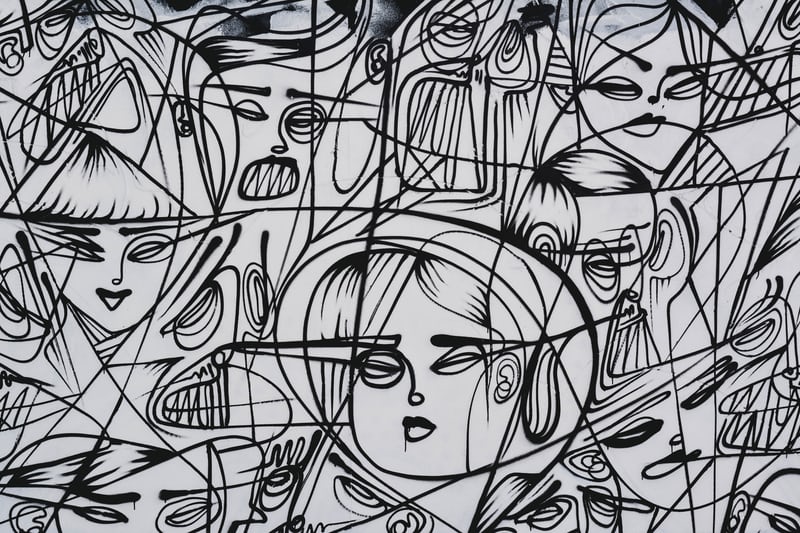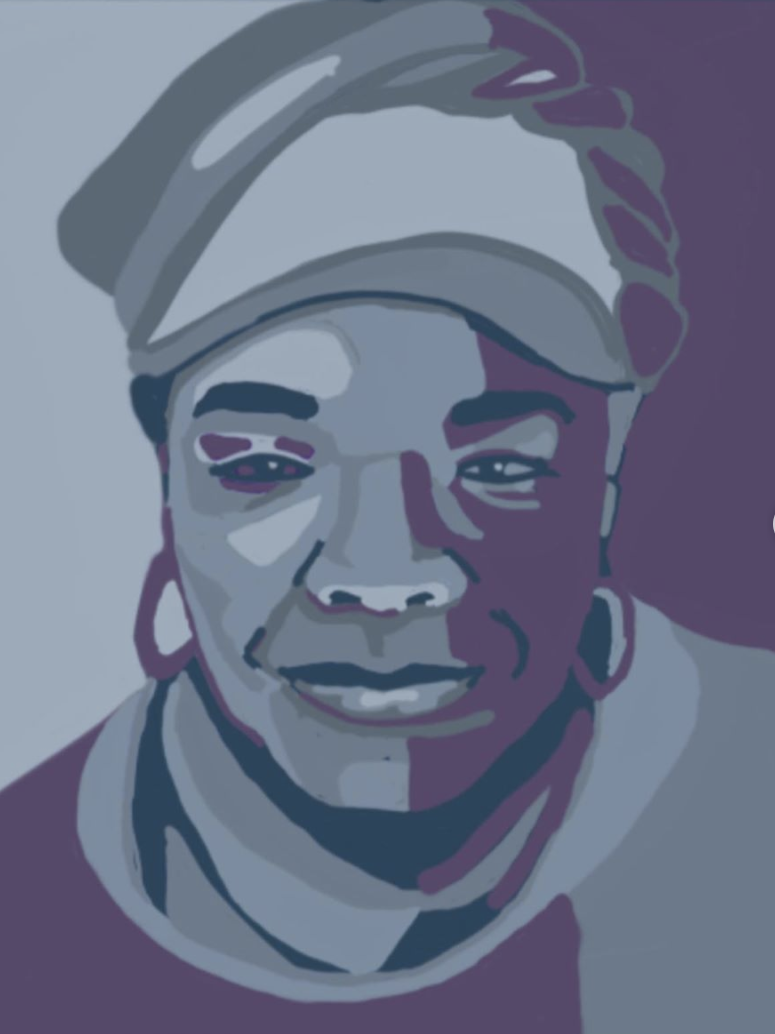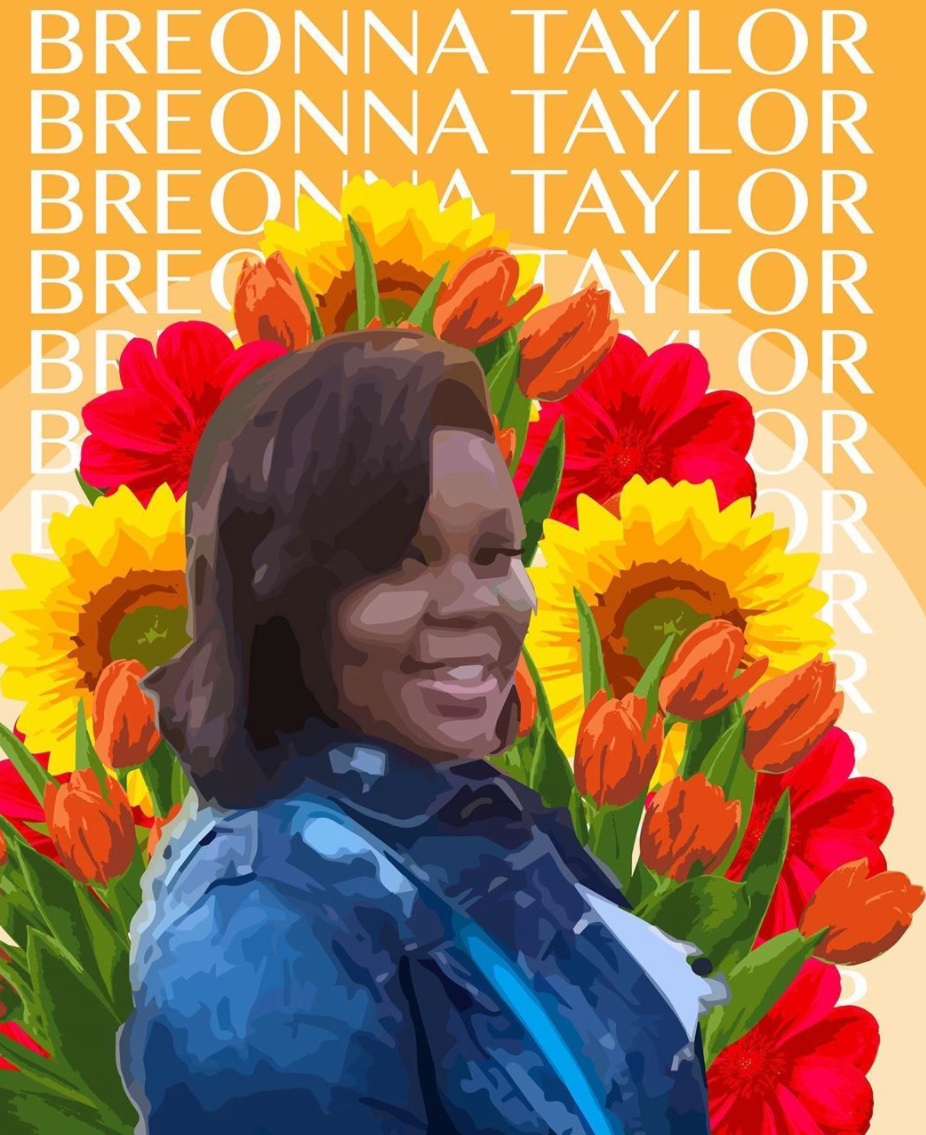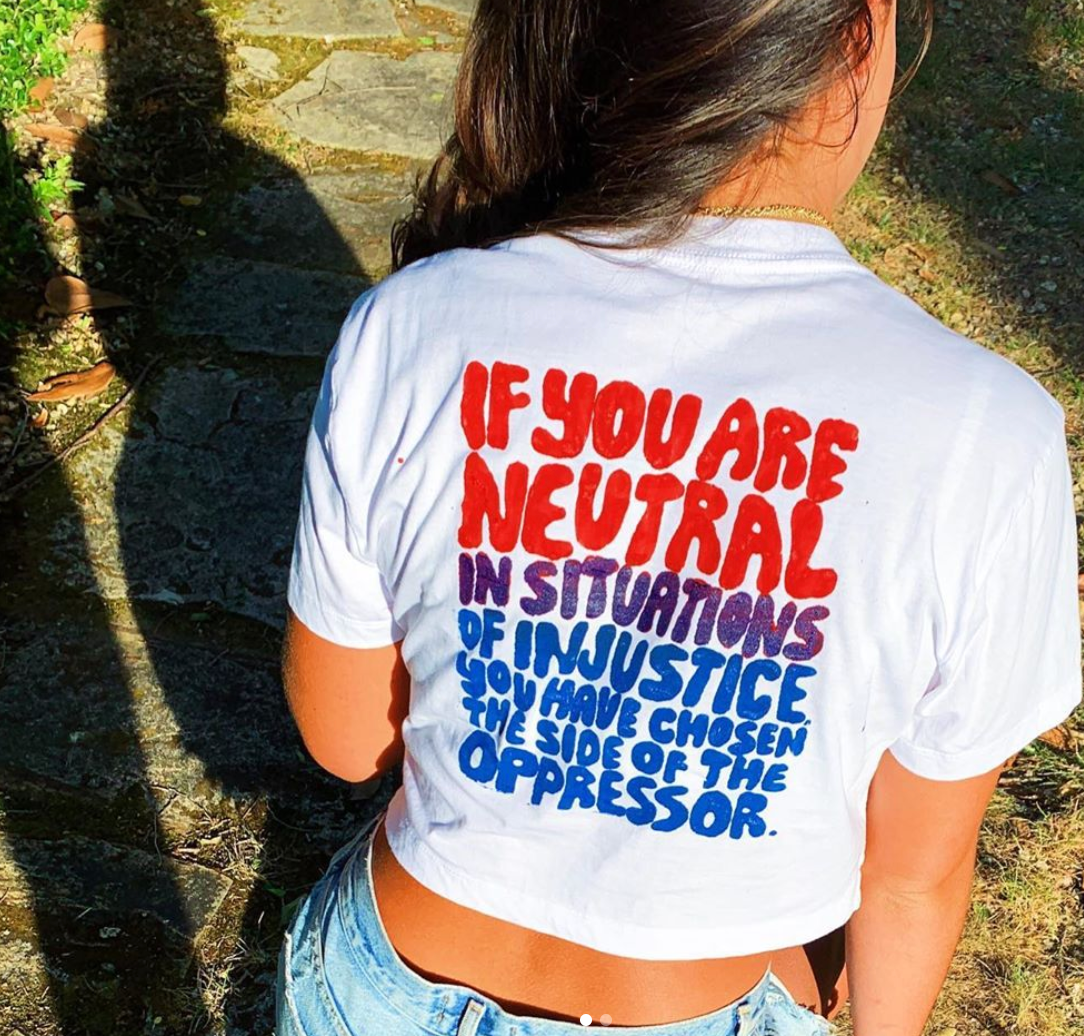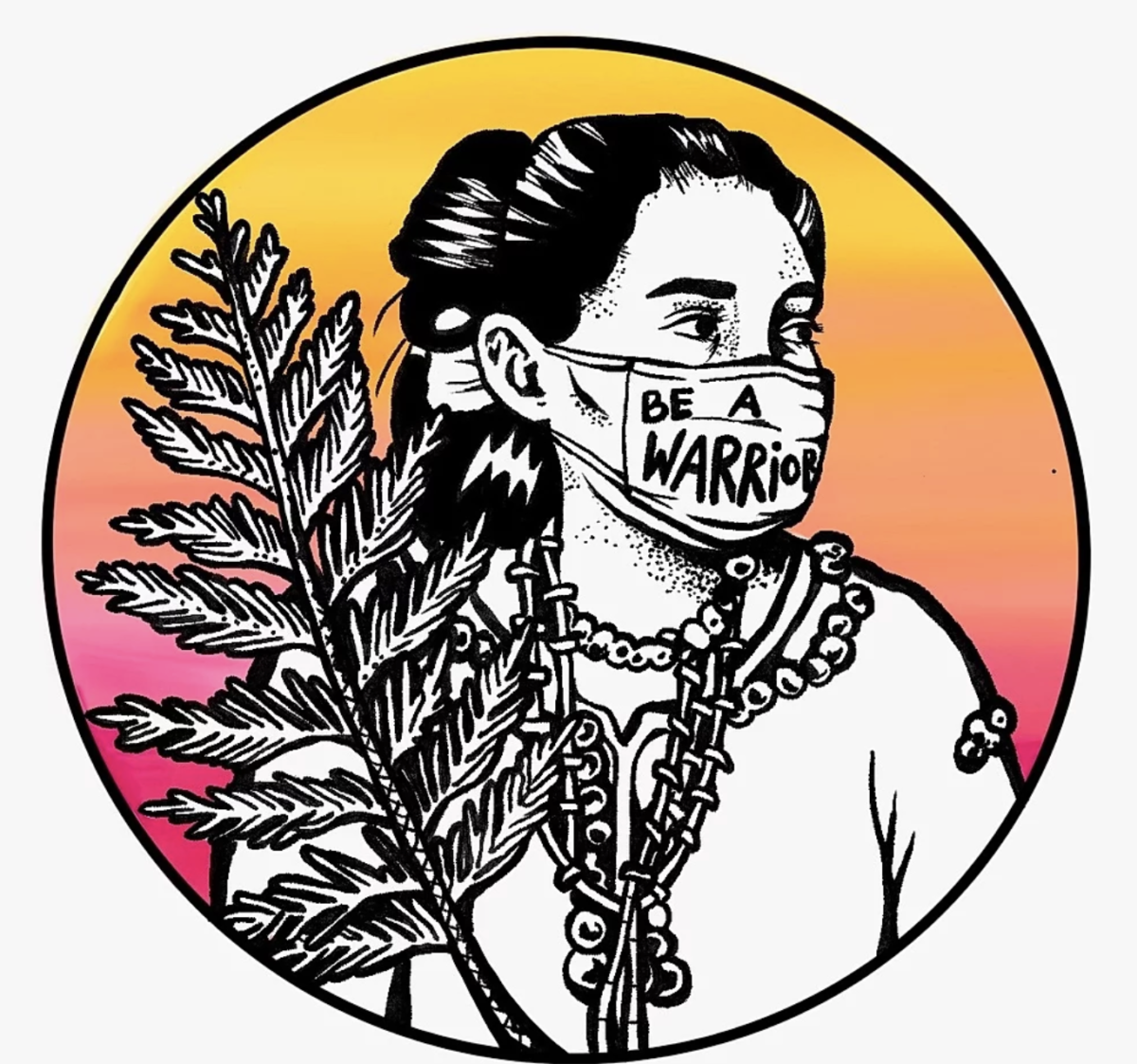Courtesy of Rinni Bhansali
Courtesy of Amy Lo
Courtesy of Corinne Charlton
Courtesy of Clara Spars
Even as art moves under the sheath of a phone screen, Stanford artists continue to make a difference. They have put their digital art space to full use, compelling the Stanford population to act.
Angel Marie ’21 is one such artist. In her Zoom square, Marie sits before a black and white tapestry of a concentric mandala, clad in a striped shirt and a backwards cap — a picture of centeredness. None of her accoutrements are pigmented, the only source of color being her expressive voice. She is a poet, musician, filmmaker and general multimedia artist. Brimming with artistic inclination, Marie jumps at the chance to express herself in her classes.
“My art is so intertwined with my research,” Marie said, speaking of her training in African American studies and political science. “It’s absorbing everything I’ve been learning in the classes, in the world that I’m observing.”
While most activism focuses on galvanizing the privileged, Marie makes sure to galvanize the oppressed too. Going to Stanford is a “privilege,” Marie recognizes, which she would like to use to impart Stanford’s teachings onto a wider audience, especially the disadvantaged. With art as a commonality between those facing hardship and those who are advantaged, the audience becomes more in tune with foreign people and ideas.
“I’m thinking [about taking] these resources… and how [to] put them into a form that I can take back home to Chicago,” Marie said. “Oftentimes people will never have taken a class at Stanford, but are able to talk critically about race theory and consciousness [after my poems].”
Rinni Bhansali ’23, another artist, has also noted the conversations that art elicits. Bhansali, along with her friend Mila Hirsch, a student at Pennsylvania State University, has been offering free art in exchange for donations. Around 10 people have reached out to her, mostly friends and family. By maintaining this intimacy, Bhansali can engage in discussions with donors that are revelatory for both parties.
“Every single request that I’ve gotten has also included a conversation,” Bhansali said. “The interpersonal side of this is educating me a lot.”
This is not the only activist method though. Amy Lo ’23 (graphics editor at The Daily) opted for a fundraising approach to artist activism rather than focusing on creating conversation. Lo raised over $30,000 for 26 causes, offering commissions through Instagram in exchange for donations. She wrapped up this initiative a month ago, finding it exhausting to pool and direct money while continuing to do commissions. When faced with a deluge of responsibilities, it was difficult to embrace the self-exploration and expression in art.
“I don’t enjoy creating all the time,” Lo said. “When you have so many things stacked up in front of you, you’re like: I need to do these as quickly and as efficiently as I can. And that takes out a lot of the joy… which is spending time and care and love.”
Lo did find respite when she created a portrait of Breonna Taylor for a directed fundraiser. Lo spent the day researching the police brutality victim — scouring social media posts from Taylor’s friends to get a sense of her character. By focusing on one person out of the droves of victims, Lo was able to humanize and individuate the need for social justice.
“It made me [feel] re-invigorated, more passionate again,” Lo said. “It reminded me of why I was doing it in the first place.”
Corinne Charlton ’22 has also described the reflection integral in artistry. Charlton sells hand-painted clothing, one piece being a fundraising T-shirt with Desmond Tutu’s “oppressor” quote. Soft painted colors imbue her Instagram page, delicate annotations to the clothing (the Desmond Tutu quote transitions tenderly from red to blue). Afflicted with dyslexia, Corinne used art to express herself where words could not, contending with emotional and mental difficulty.
“Art is not a choice but a passion, an expression [of] something bubbling to be released,” Charlton wrote in an email to The Daily. “Art became a natural release for some of these negative emotional struggles I faced, and when my dyslexia made me feel alone, art brought me back to my community.”
Clara Spars ’21, a former staff writer for The Daily, used her art to connect with the cause as well. Spars runs Kita Products, which sells Spars’ designs printed on clothing. Her company has raised over $20,000 for various causes — workers’ rights, Native American support and diversifying school curricula, among others. She creates her designs by connecting with individuals who would be benefitted by her fundraising. Acting as an artistic surrogate, Spars becomes more attuned to the causes for which she is fighting.
“When it comes to… creating a symbol for a given movement, there has to be the voices of the people who are impacted in that process, because I could never represent something for someone else without fully understanding it,” Spars said. “You’re actively learning while you’re also creating. And I think it’s a really cool process.”
Art has been incredibly effective in fostering emotional connection to the social justice cause, both for the artists and the art recipients. Instead of only encouraging a fleeting donation, Stanford artists are making their community more aware of what’s at stake. Their activism infuses the dialogue with the best method of connecting people to a cause — common humanity.
“I … felt a large separation between the cause and the messages going around,” Charlton wrote. “Art was something that could bridge that gap.”
Contact Diana Piper at dianapiper ‘at’ gmail.com.
